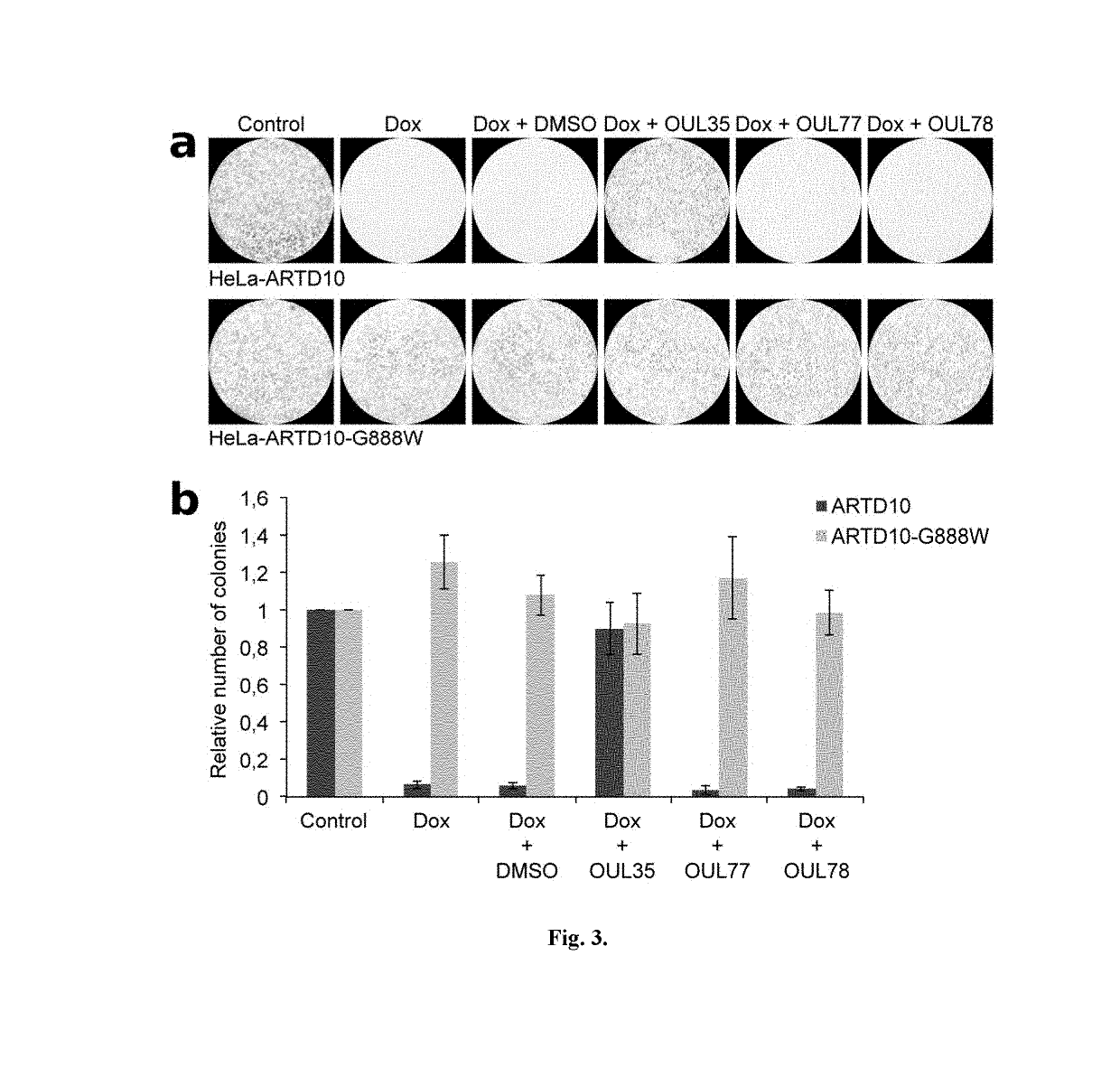Compounds for use in the treatment of cancer
a technology for cancer and compounds, applied in the field of enzyme inhibitors, can solve the problem of not being able to evaluate the cellular effects of inhibiting these enzymes
- Summary
- Abstract
- Description
- Claims
- Application Information
AI Technical Summary
Benefits of technology
Problems solved by technology
Method used
Image
Examples
example 1
[0089]Used Proteins
[0090]All the proteins used in the study were produced recombinantly in E. coli host. Details for the amino acid composition of each construct are described in Tables 1 and 2. Proteins were purified using affinity chromatography (Ni-NTA) and size-exclusion chromatography. DNA binding ARTDs were further purified on a heparin column before performing the size-exclusion chromatography. In some cases the 6×his-tag was cleaved from the fusion proteins (ARTD12, ARTD15). The protocol described above summarizes the general purification method followed for all the proteins used in this study. More details about constructs used in different assays are given in Tables 1 and 2.
[0091]Differential Scanning Fluorimetry
[0092]Differential scanning fluorimetry was performed with protein concentrations of 0.25 mg / ml. Details of the expression constructs used for each ARTD are provided in Table 1. The concentration of OUL35 was 100 μM. Control wells without the compound contained an ...
example 2
[0115]Various R substituents are effective in the scaffold as described in Formula (I). The compounds were assayed for the inhibition of ARTD10 activity as described above and examples of the effective groups in the contexts of the variable linkers are shown in FIGS. 5-7. These results show that the minimum R group in the context of a one atom linker (L) is a methyl group, although the increase of the size improves the potency like in the case of a cyclobutyl. Also a large bulky naphtalenyl group is tolerated as an R group.
PUM
 Login to View More
Login to View More Abstract
Description
Claims
Application Information
 Login to View More
Login to View More - R&D
- Intellectual Property
- Life Sciences
- Materials
- Tech Scout
- Unparalleled Data Quality
- Higher Quality Content
- 60% Fewer Hallucinations
Browse by: Latest US Patents, China's latest patents, Technical Efficacy Thesaurus, Application Domain, Technology Topic, Popular Technical Reports.
© 2025 PatSnap. All rights reserved.Legal|Privacy policy|Modern Slavery Act Transparency Statement|Sitemap|About US| Contact US: help@patsnap.com



